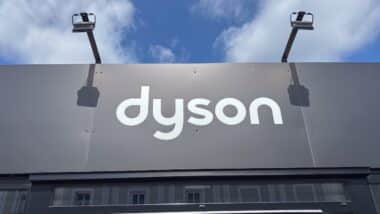 A recent Target debit card fees class action lawsuit investigation has been launched looking for individuals who may have been hit with excessive insufficient funds fees by Target and their financial institution when they made purchases on their Target REDcard.
A recent Target debit card fees class action lawsuit investigation has been launched looking for individuals who may have been hit with excessive insufficient funds fees by Target and their financial institution when they made purchases on their Target REDcard.
The Target debt card, also known as a REDcard, is a store-brand card that draws money from the consumer’s bank account and offers five percent off purchases.
However, Target REDcard consumers have complained that even though they had sufficient funds in their accounts when they used the card, they were still charged Target debit card fees for insufficient funds. Many are complaining that with the excessive Target debit card fees, the card is really not a bargain at all.
Overview: Target Debit Card Fees
The Target REDCard is marketed as something like a debit card. When customers use the card, they get five percent off their purchases, in addition to other perks and benefits.
The Target REDCard draws funds directly from a purchaser’s bank account. However, the one difference between this and a normal debit card is that this money may not taken out of the account immediately at the time of the transaction. It can reportedly take a couple days for the transaction to clear through the bank.
Though customers may have the funds available at the time the card is swiped, they may not have enough money to cover the purchase days later. And so, if there are not enough funds available to cover the purchase, customers or debit card holders face not only insufficient funds charges by their financial institution, but are also charged a returned payment fee from Target.
Customers have difficulty comprehending why they would be charged a Returned Payment Fee (RPF) from Target when the store approved the transaction in the first place. And consumers report that they certainly don’t understand how they can not only be charged double or even triple fee penalties through Target and their bank on the same transaction.
In one transaction, the Return Payment Fee and the consumer’s insufficient bank fees can reportedly total almost $60. Additional fees have reportedly been added when Target attempts to submit the transaction again, up to two more times. Consumers say that they were subject to Target debit card fees each time the store submitted the transaction. Ultimately, one purchase through Target’s REDCard can reportedly add up to $100 in total Target debit card fees and bank fees.
Unfortunately, consumers say they are left to pay Target debit card fees although their accounts had sufficient funds available at the time to cover their purchases. They claim these fees are only slapped on because of Target’s intentional delay in processing transactions that turn positive fund transactions into negative-funds transaction.
A Target debit card fee class action lawsuit was filed over this issue a couple years ago. The allegations stated that Target consumers were harmed and misled by deceptive and false marketing tactics surrounding the debit card. In fact, consumers said they were shocked to discover that the use of the card could cause such massive Target debit card fees.
The class action lawsuit contended that when the REDcard was marketed as a debit card, consumers reasonably expected that funds would be deducted immediately and that transactions should be denied if there are insufficient funds in the account.
Join a Free Target Red Card Class Action Lawsuit Investigation
If you have a Target Debit Card and you were charged fees for insufficient funds by Target and your bank, you may qualify to join this Target Red Card class action lawsuit investigation.
ATTORNEY ADVERTISING
Top Class Actions is a Proud Member of the American Bar Association
LEGAL INFORMATION IS NOT LEGAL ADVICE
Top Class Actions Legal Statement
©2008 – 2025 Top Class Actions® LLC
Various Trademarks held by their respective owners
This website is not intended for viewing or usage by European Union citizens.















4 thoughts onComplaints of Excessive Target Debit Card Fees Spark Class Action Lawsuit Investigation
Please add me!
Please add me because there’s no option to add myself to the list.
Please add me
Please add me